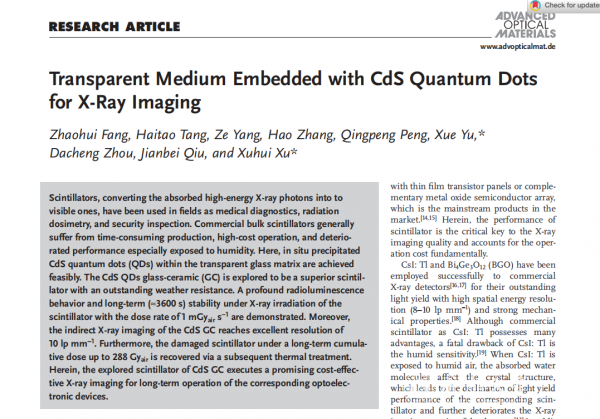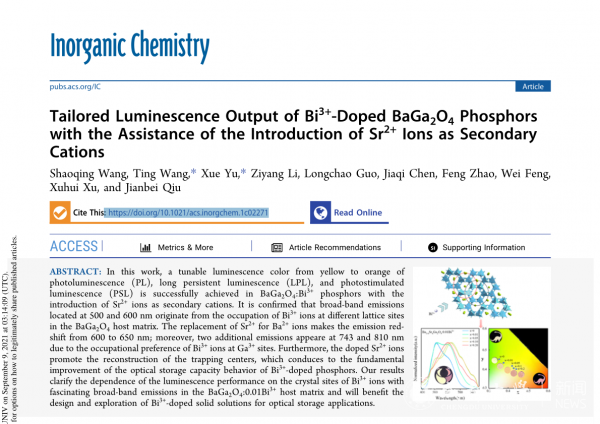Recently, Professor Yu Xue from the School of Mechanical Engineering of Chengdu University has published two research articles as the corresponding author in authoritative academic journals, with Chengdu University as the first affiliation. The two papers are titled "Transparent Medium Embedded with CdS Quantum Dots for X-Ray Imaging" and "Tailored Luminescence Output of Bi3+-Doped BaGa2O4Phosphors with the Assistance of the Introduction of Sr2 +Ions as Secondary Cations", respectively, which are published in Advanced Optical Materials (Grade 1 by the Chinese Academy of Sciences, IF: 9.926), a top journal in the field of materials science and engineering technology and Inorganic Chemistry (Top of Grade 2 by the Chinese Academy of Sciences, IF: 5.165), a famous journal in the field of inorganic chemistry.

Yu Xue's research team proposed a strategy for in-situ precipitated CdS quantum dots within inorganic transparent medium borosilicate glass matrix to achieve high-energy X-ray scintillators. Profound optical stability and excellent spatial resolution of 10 lp mm-1 under the continuous X-ray irradiation with the dose rate of 1 mGyairs-1 and the duration of 3600 s are demonstrated. Moreover, this strategy has also demonstrated that it can not only effectively eliminate the pollution of Cd2+ ions, but also can provide a solution to the problem of scintillator radiation damage. This research is of great significance to the development of the new low-cost and high-stability X-ray scintillators, and shows a promising prospect of CdS quantum dots glass-ceramic scintillators as well. Source: https://doi.org/10.1002/adom.202101607.

In addition, Yu Xue’s research team also reported a BaGa2O4:Bi3+ phosphor that can adjust the luminescence output of its photoinduced and light storage with the assistance of trapping adjustment. By controlling the occupation of secondary cations at different lattice sites, the reconstruction of trapping centers can be promoted, which leads to the improvement of the optical storage capacity behavior and the change of the luminescence output color. This research provides new ideas for the design and exploration of Bi3+-doped luminescence color regulation or optical storage applications. Source: https://dx.doi.org/10.1021/acs.orglett.1c02271.